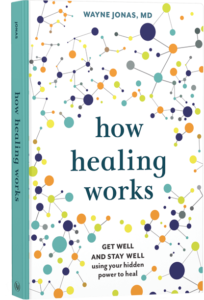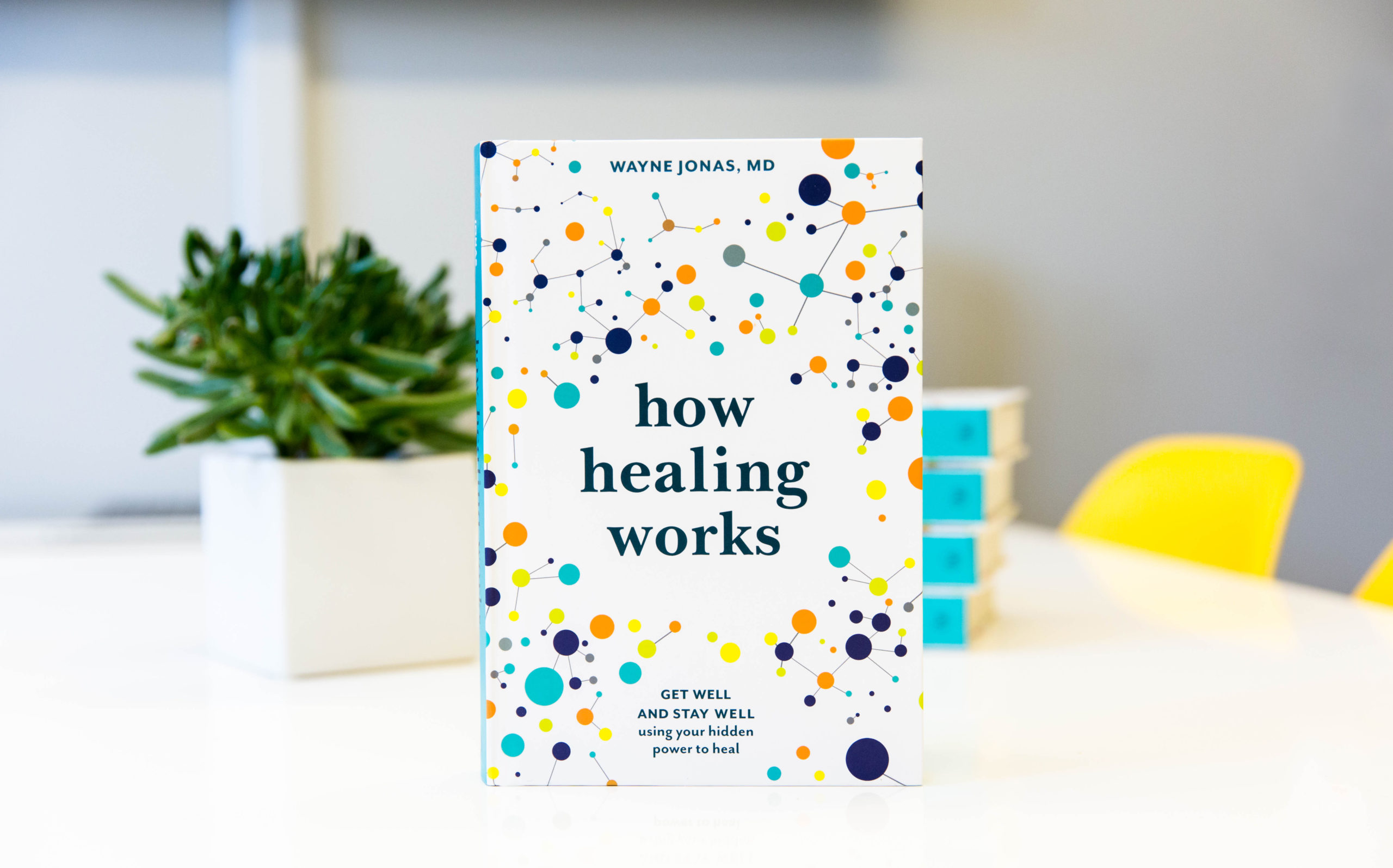As we’ve discussed over the last several weeks, the journey from cancer diagnosis to a place of healing can be long and difficult. Jenny Leyh’s experience—which was shot a couple years ago in a cancer video series—has proven to be an eye-opening depiction of this ordeal. With her honest discussion of cancer and her steps to a “new normal” after cancer she’s inspired patients and providers everywhere.
I was similarly moved and wanted to share my own experience in dealing with my wife Susan’s cancer and the necessary response we took following her second diagnosis. The following excerpt is from my book, How Healing Works, and describes Susan’s dilemma in addressing this new cancer and the challenges she confronted—and overcame.
Susan’s first breast cancer had appeared when she was thirty-five. We had three young children. We cried for days that first time. Her father had suffered a lot as his lung cancer progressed, and we were only a few years out from that experience and his passing.
We had built a treatment and healing ritual that helped her to recover and be cancer-free for twenty-five years. Now, when the MRI and biopsy confirmed another cancer—a different type of breast cancer this time, likely induced by her treatments for the first one—we had a good idea of what we were up against. The treatments—three types of chemotherapy, a bilateral mastectomy followed by antiestrogen drugs—were going to require that Susan tap deeply into her own capacity to heal, not so much from the disease as from the therapies.
As is too often the case in health care today, healing is needed as much to recover from the treatments as to deal with the disease. We are in an age of heroic medicine where there is a thin line between the benefits and harms caused by the treatment. This is especially true for cancer treatments. Dealing with the disease and the therapy requires resilience and the ability to recover. We needed to tap deeply into her healing capacity.
Susan and I have always been very different in our responses to her cancers. I, like most physicians, am a do-er—always looking for something to add or manipulate in a person with the idea it will cure them. Susan is more of a be-er—weighing the value of these recommendations with her own values and desires. When faced with a challenge, my instinct is to do it all and look everywhere. If there’s a hint of evidence for benefit, I like to try it out, provided the risks are not too great. My wife, on the other hand, is a minimalist; her attitude is “Tell me what I absolutely have to do and I’ll do it grudgingly, folding up inside my shell and sleeping until it’s over.”
Healing requires both responses, but not too much of either one. Most important, the response must be created by and meaningful for the person in need of the healing. The methods, whether trying out multiple treatments or holing up in bed, are all simply techniques for navigating the maze of responses when our health and life is threatened.

In the last twenty-five years there have been major advances in the management of breast cancer. These new approaches are guided by genetic testing. The nice thing about genetic tests is they can help tell what the survival benefit from chemotherapy will be for many patients—so they provide that therapy for only those it will help and avoid harming all the others.
Susan had those tests and hoped she would not need chemotherapy. Unfortunately, her tests demonstrated that Susan was highly susceptible to a recurrence of the tumor. New chemotherapies like paclitaxel that hadn’t existed twenty-five years before might be helpful to reduce that risk. The additional benefits of chemotherapy were modest, improving her ten-year survival chances by 7%—from 88% to 95%. Also, new and sophisticated imaging tests showed that she had atypical cells in her other breast that might become cancer in several years. “Might” was the operative word in this case. We had no idea whether that would happen.
Between 30% and 50% of breast cancers detected by these new imaging methods will likely not advance to become problematic. We just don’t know which patients those will be, so we treat them all as if they are at high risk. Genetic testing is helping us find out which patients may benefit from treatment and which patients the treatment may harm, but there is uncertainty for many. Still, none of this was known twenty-five years ago.
For Susan, however, it soon became clear what she wanted to do. Chemotherapy would reduce her chances of recurrence by 7%. The genetic tests, the abnormal findings in her other breast, and her own personal and family history of previous cancers moved her to decide that the best approach for improving long-term survival involved several rather harsh treatments. She was at high risk for recurrence, so she decided to “hit it with all barrels”—twenty weeks of three types of chemotherapy followed by a double mastectomy followed by ten years of an antiestrogen drug. She would need to tap into her 80% healing capacity just to withstand the cure. The healing would be hard.
Susan was now faced with a dilemma that many of those with chronic illness often confront: the clash of two systems with very different goals. Our cure-focused medical systems are by far the dominant force, populated with well-trained experts and bolstered by the best (but always uncertain) evidence that modern medical research money can buy. Rarely does this system spend the time or money to investigate or provide care for what the whole person needs for healing—their social and emotional situation; the strength of their physical, nutritional, and mental fitness; the lifestyle and behavioral resources available to help them heal; and the value and goals they have for a meaningful life.
We have no integrative health system for the delivery of both curing and healing in cancer, for bringing together evidence-based medicine and person-centered care. Susan and I discussed this dilemma as we sat in the preoperative suite waiting to have a vascular port inserted into her chest through which she would receive her weekly chemotherapy. She lay in bed dressed only in an operating gown, with the nurses, technicians, and physicians moving in and out. They checked the marks where they would open her neck to bury the tube running into the veins. The port would be used every week to draw blood and check her white blood cell count and to deliver the three chemotherapies. How, we wondered, could she be empowered to find a meaningful path forward under these circumstances? It was not obvious.
Instead of deciding what to do, she paused in the now, meditated, and listened to her innermost self. She wanted to understand how her current disease and treatment might link to her soul. As they rolled her into the operating room, she heard a song over the intercom. It happened to be a song she had listened to the summer before while walking the Camino de Santiago (The Way to St. James) in France and Spain with our daughter. The song was “All of Me” by John Legend.
Suddenly, the memory of that wonderful, spiritual walk came back to her and she felt deeply loved, not just by those around her, but by her own God—even in the midst of this difficult life challenge. She relaxed and released her worries about how to solve the dilemma she now faced. As she drifted off under anesthesia, she had a flash of insight. To imbed meaning into her healing and integrate it with her cancer treatment, she would need a healing space in our home. We needed to redo our bedroom.
To learn more about cancer and the integrative approach to treating cancer, specifically breast cancer, see the Your Healing Journey: A Patient’s Guide to Integrative Breast Cancer Care. And, of course, to read more about this topic and all of integrative health, check out my book, How Healing Works.

Your Health Into Your Own Hands
Drawing on 40 years of research and patient care, Dr. Wayne Jonas explains how 80 percent of healing occurs organically and how to activate the healing process.

